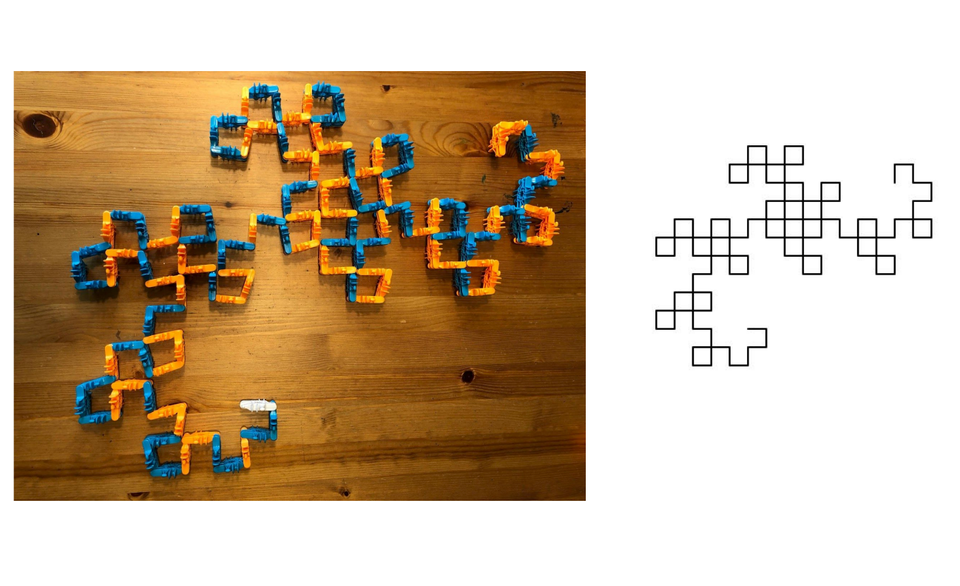Week 9: Dragon Curve

The Dragon Curve is a fractal that is well explained in this numberphile video. This week learners can create a dragon curve with a strip of paper, Lux Blox, Python programing, Legos or toothpicks.
Paper:
For paper, I would suggest using a strip of thin paper. Thicker paper doesn’t produce as many folds as thinner paper. You fold the paper in half, and just make sure you fold from left to right. You can tape, glue or pin your dragon curve down when you are down. One question I like to ask students is: “does the length of paper change how many folds you can get? If so, how?” It is a fun experiment to run.
Lux Blox:
I put together a pdf on this project here.
Python:
With python, I would encourage learners to think about how the algorithm would look to create the Dragon Curve. There needs to be a loop for each iteration, but what does that look like? Here is my code (copy and paste it into a py file), but I encourage learners to try first. If you notice that I have an input for angle, it’s because I liked playing with the angles of the dragon curve to create different patterns and variations of the curve. You can hardcode it to 90 degrees if you wish. Play and you never know what you will find.
